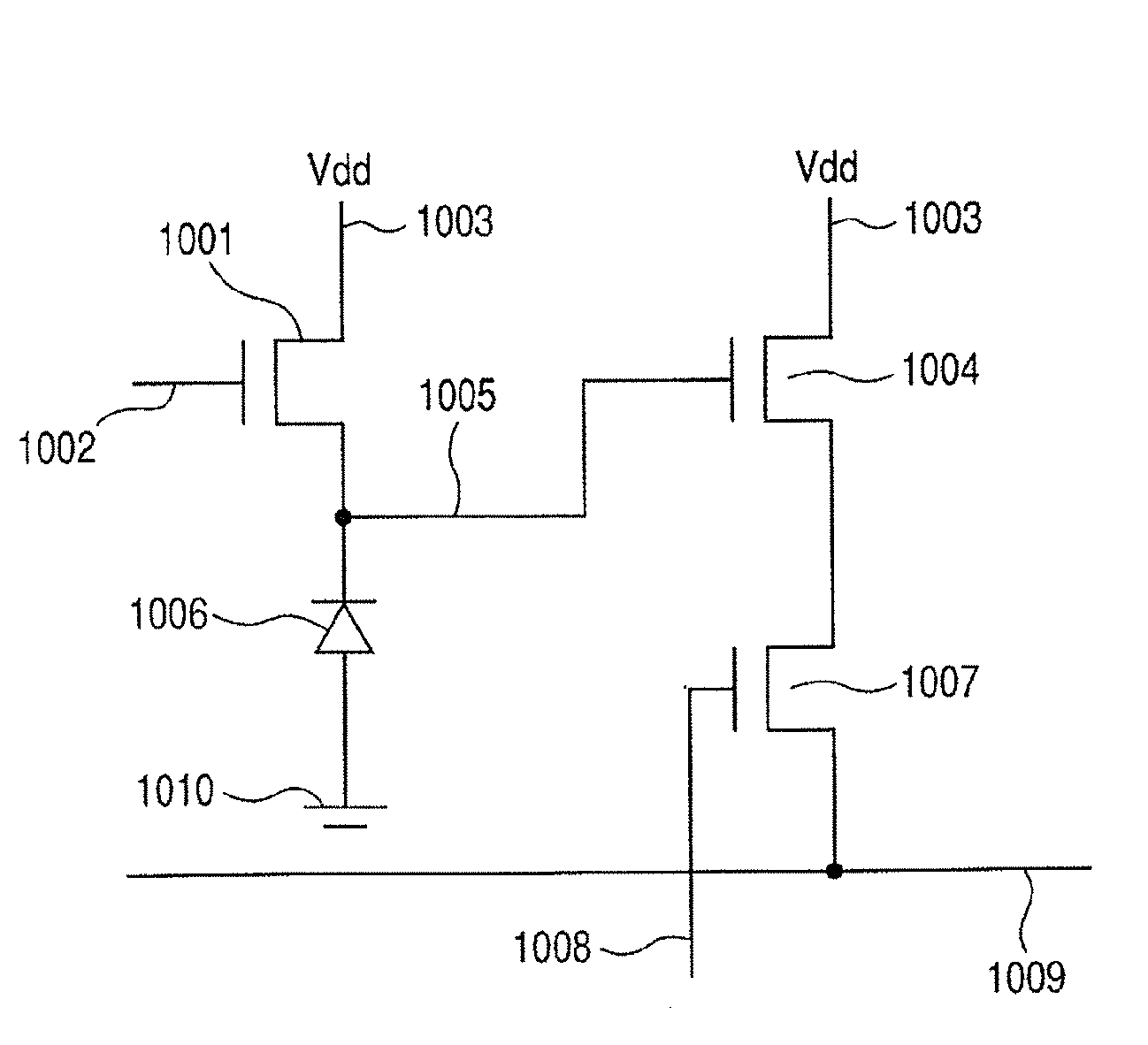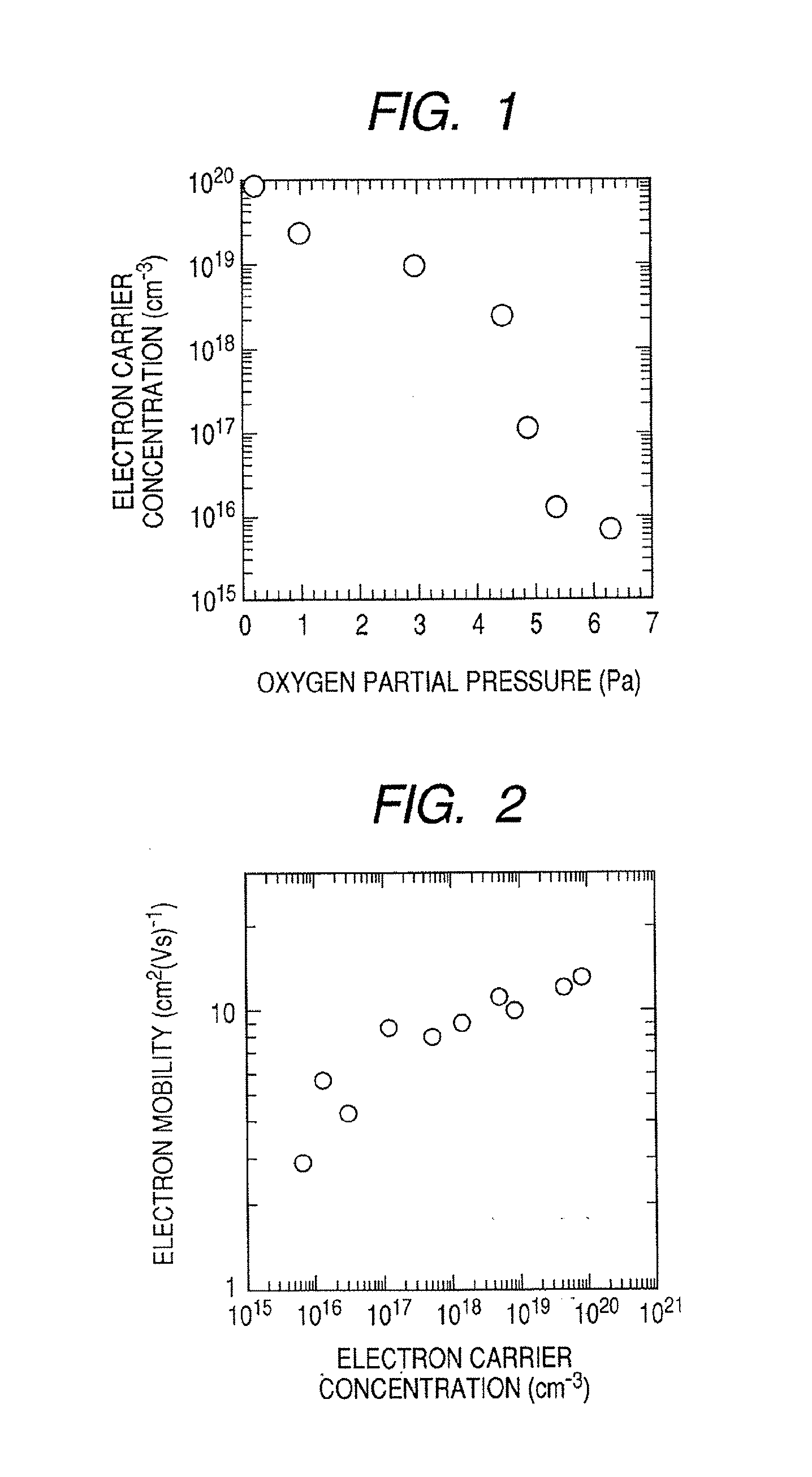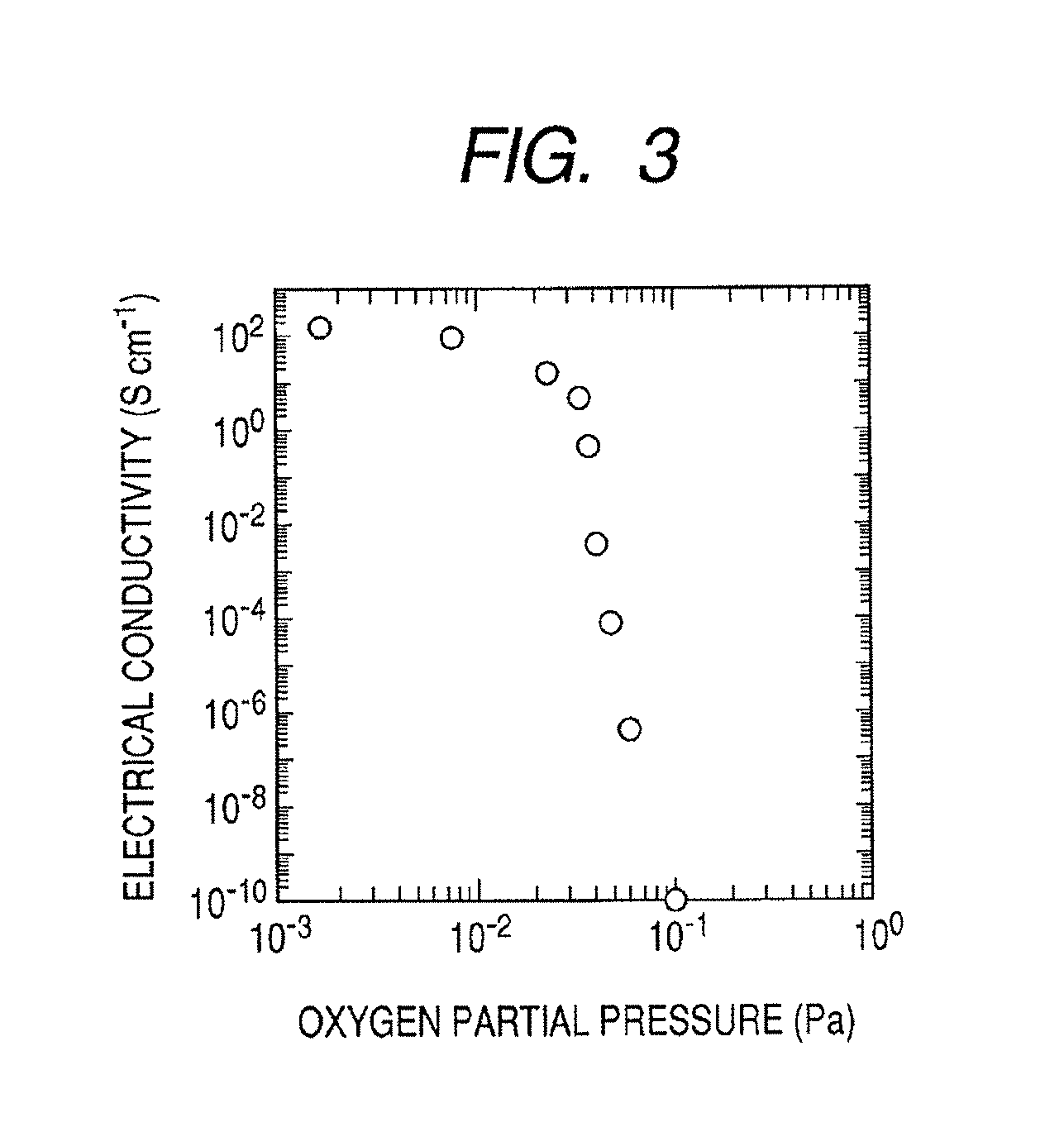Sensor and image pickup device
a technology of sensor and image, applied in the direction of x-ray diagnosis, gamma/cosmic radiation measurement, radioation controlled devices, etc., can solve the problems of reducing the physical burden of the measuring person, the difficulty of detecting corroded states and the like of the tubes, and the complicated layout of the tubes. , to achieve the effect of reducing the physical burden on the measuring person and reducing the distortion
- Summary
- Abstract
- Description
- Claims
- Application Information
AI Technical Summary
Benefits of technology
Problems solved by technology
Method used
Image
Examples
first embodiment
[0067]FIG. 8 shows a first schematic structural view of a sensor for detecting a received electromagnetic wave according to the present invention.
[0068]The sensor according to the present invention is constituted of a lower electrode (702), an amorphous oxide semiconductor layer (703), and an upper electrode (704) on a substrate (701).
[0069]The upper electrode may be referred to as the first electrode, and the lower electrode may be referred to as the second electrode.
[0070]In this embodiment, for example, an oxide having an electron carrier concentration of less than 1018 / cm3 is used for the amorphous oxide layer.
[0071]The thickness of the amorphous oxide semiconductor layer, which is appropriately optimized depending on the wavelength of light with which the layer is irradiated or a pigment for pigment sensitization, is preferably 10 nm to 1·m, or more preferably 10 nm to 500 nm.
[0072]The amorphous oxide semiconductor shows n-type conduction when it is a semiconductor containing I...
second embodiment
[0098]FIG. 10 shows a schematic view of an image pickup device according to the present invention. The invention according to this embodiment is, for example, an X-ray image sensor. The image pickup device of the present invention is constituted of a lower electrode 902, a semiconductor layer 903 to serve as an opto-electric conversion element, an upper electrode 904, and a scintillator 905 on a deformable substrate 901. The constitution shown in FIG. 8 or 9 can be used for the constitution from the substrate 901 to the upper electrode 904. The semiconductor layer is formed of, for example, an amorphous oxide containing at least In—Ga—Zn—O.
[0099]At least part of the image pickup device according to the present invention preferably has a non-flat portion. Of course, an image pickup device which instantaneously has a flat shape but can be deformed into a non-flat shape is also preferable.
[0100]An amorphous oxide (to be described in detail later) may be used for the semiconductor layer...
example 1
[0307]An optical sensor device shown in FIG. 8 is formed. An Al electrode having a thickness of 100 nm is formed on a glass substrate (1737 manufactured by Corning Inc.) by means of a vacuum deposition method to serve as a lower electrode. Next, a polycrystalline sintered material having an InGaO3(ZnO)4 composition is used as a target to deposit an In—Ga—Zn—O-based amorphous oxide semiconductor thin film on the electrode by means of a pulse laser deposition method using a Kr excimer laser. In2O3(SnO2) having a thickness of about 20 nm is laminated on the thin film at a substrate temperature of room temperature by means of a vacuum deposition method to serve as an upper electrode. Thus, an optical sensor is formed. At the time of use, a negative bias is applied to the upper electrode on a light incidence side, and a positive bias is applied to the lower electrode. Then, the optical sensor device is irradiated with ultraviolet light having a wavelength of 365 nm from a mercury lamp. T...
PUM
 Login to View More
Login to View More Abstract
Description
Claims
Application Information
 Login to View More
Login to View More - R&D
- Intellectual Property
- Life Sciences
- Materials
- Tech Scout
- Unparalleled Data Quality
- Higher Quality Content
- 60% Fewer Hallucinations
Browse by: Latest US Patents, China's latest patents, Technical Efficacy Thesaurus, Application Domain, Technology Topic, Popular Technical Reports.
© 2025 PatSnap. All rights reserved.Legal|Privacy policy|Modern Slavery Act Transparency Statement|Sitemap|About US| Contact US: help@patsnap.com



